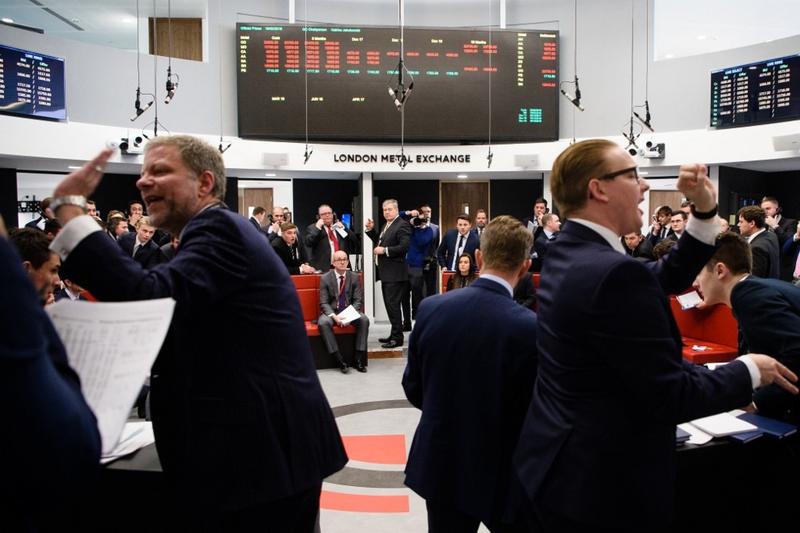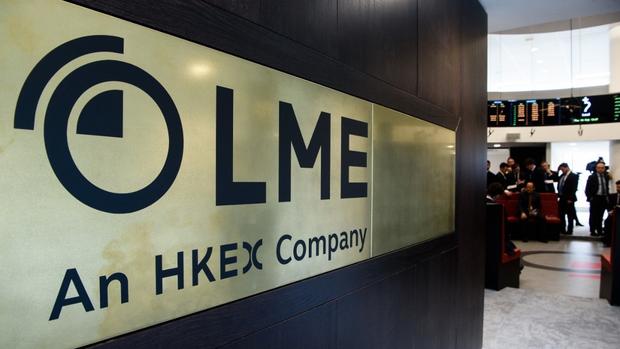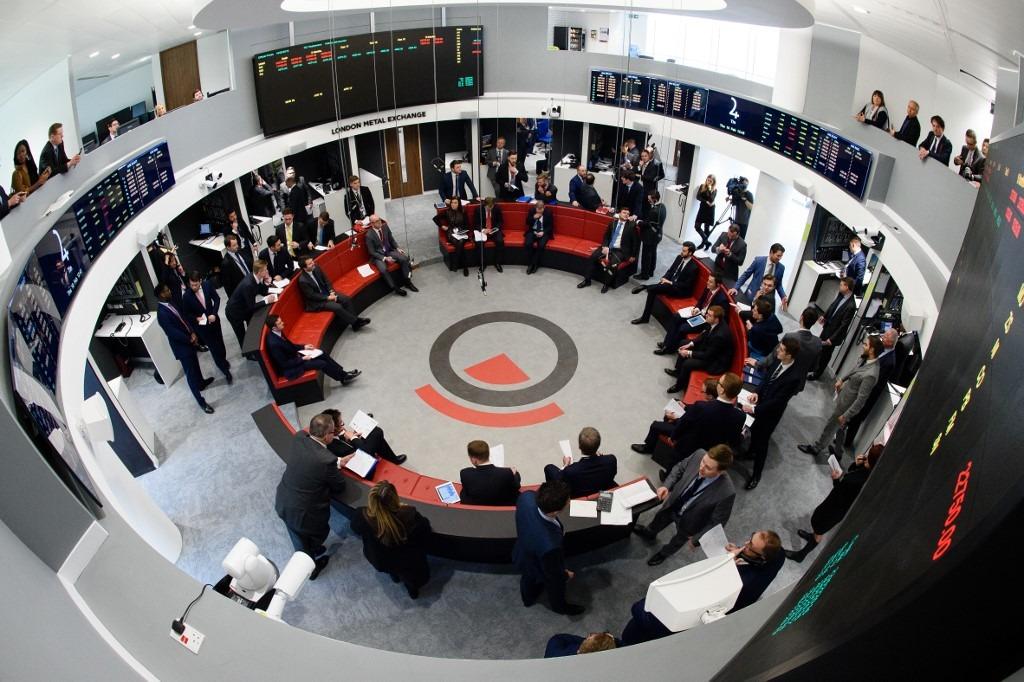 In this Feb 18, 2016 file photo, traders operate in the Ring, the open trading floor of the new London Metal Exchange (LME) in central London. (LEON NEAL / AFP)
In this Feb 18, 2016 file photo, traders operate in the Ring, the open trading floor of the new London Metal Exchange (LME) in central London. (LEON NEAL / AFP)
LONDON — The London Metal Exchange’s open outcry trading floor may remain closed for many more months as it cannot be reopened under COVID-19 social distancing restrictions, the head of the exchange said.
LME Chief Executive Matthew Chamberlain also told Reuters the exchange would look at potential M&A activity, but nothing was on the agenda currently
LME Chief Executive Matthew Chamberlain also told Reuters the exchange would look at potential M&A activity, but nothing was on the agenda currently.
“The challenge we have with the ring is that it’s all or nothing,” he said in an interview.
“It is certainly a possibility that if social distancing is required for many more months, then the ring is closed for many more months.”
The 143-year-old LME temporarily closed the ring - the last open-outcry floor in Europe - on March 23 when the coronavirus lockdown began.
While nearly every other financial exchange moved to screen trading, the LME has been one of the last bastions where traders still do live deals in a circle of padded, red-leather benches.
 A sign for the London Metal Exchange (LME) on a wall by the new Ring, the open trading floor of the LME following its relocation in central London on Feb 18, 2016. (LEON NEAL / AFP)
A sign for the London Metal Exchange (LME) on a wall by the new Ring, the open trading floor of the LME following its relocation in central London on Feb 18, 2016. (LEON NEAL / AFP)
Floor dealers on the exchange, the world’s oldest and largest market for industrial metals, have resisted the shift to full digital trading during the virus pandemic.
Chamberlain said the transition to fully electronic trading has been smooth, with no complaints from members or clients.
The future of the ring has been under scrutiny for years, with one faction arguing that the LME should join the global move to digital trading while others worry about losing flexibility for physical metals business.
While the success of screen trading opens up the potential for scrapping the ring, Chamberlain said the LME would not be pressing that case but leave it up to users to reopen this conversation following the return of the ring.
ALSO READ: UK is first European country with 40,000 virus-linked deaths
“Although we’ve shown things work well without the ring, things work well with the ring as well. You could now have a conversation with members, should they wish, about which is better for the long term,” he said.
 Traders operate in the Ring, the open trading floor of the new London Metal Exchange (LME) in central London on Feb 18, 2016.
(LEON NEAL / AFP)
Traders operate in the Ring, the open trading floor of the new London Metal Exchange (LME) in central London on Feb 18, 2016.
(LEON NEAL / AFP)
Only nine Category 1 members are allowed to trade on the floor of the LME - owned by Hong Kong Exchanges and Clearing Ltd. - where complex trades to adjust contracts generate extra revenue.
]The LME is unique among exchanges in that it allows users to lock in prices for individual days for the first three months forward and weekly up to six months - meaning there are hundreds of potential dates to trade and adjust.
Chamberlain said one area not tested completely was having an extremely busy final “kerb” session that determines the closing prices for the LME’s complex forward curve.
READ MORE: UK's COVID-19 toll rises above 32,000, highest in Europe
The ring has its roots in the early 19th century when the Royal Exchange, the world’s first commodities market, became so crowded that metal merchants gathered at the Jerusalem coffee house on Cornhill in the City of London to conduct business.


